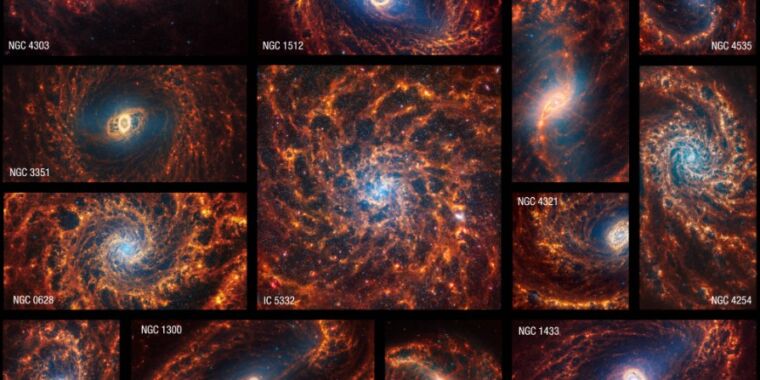This is the best summary I could come up with:
NASA’s new infrared telescope observed 19 nearby face-on spiral galaxies in near- and mid-infrared light as part of its contributions to the Physics at High Angular resolution in Nearby GalaxieS program (PHANGS).
Astronomers have combined all of this information to glean new insights into spiral galaxies, which share much in common with our Milky Way.
One thing that almost immediately stood out to astronomers was that Webb’s images show large, spherical shells in the gas and dust.
“These holes may have been created by one or more stars that exploded, carving out giant holes in the interstellar material,” explained Adam Leroy, a professor of astronomy at The Ohio State University in Columbus.
The study of these structures will provide key insights into how galaxies build, maintain, and shut off star formation.
If you click through the link, it is fascinating to see the differences between the infrared data from Webb, and Hubble’s optical images.
The original article contains 236 words, the summary contains 154 words. Saved 35%. I’m a bot and I’m open source!


